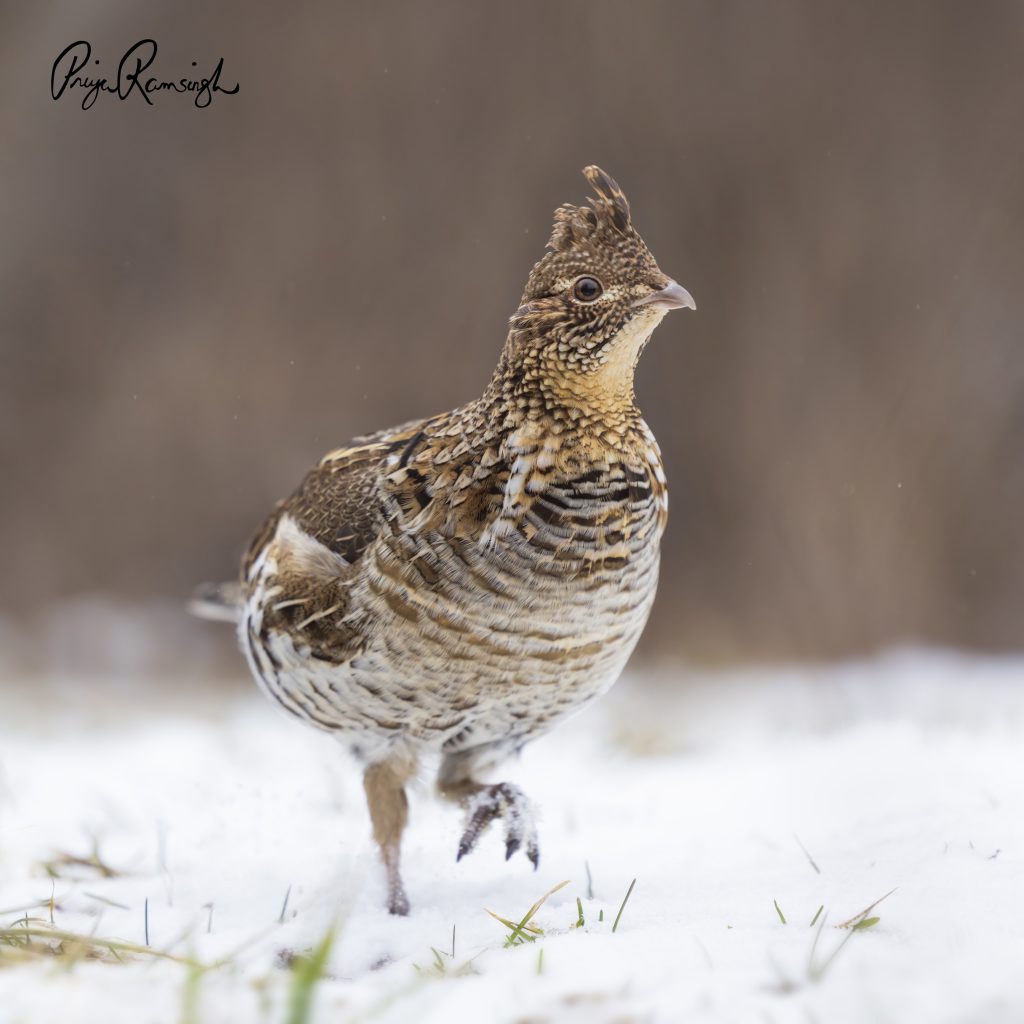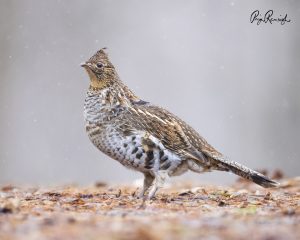We called him Gord. A name seemed fitting since he had character – a Ruffed Grouse that lived in a public park in the GTA and came out in the open when people entered his area. A bird that walked up to your feet and pulled at your bootlaces, and gave chase when you walked in the opposite direction.
A bird that was recently euthanized.

When I first learned about the Grouse, I was intrigued, and naturally wanted to take its picture. Ruffed Grouse have always eluded me. My one attempt at a photograph happened a couple of summers ago when I rescued one from the middle of a road up north of the GTA. The bird spent a couple of hours in my crate at the advice of a wildlife rehabilitator, and when it recovered from whatever trauma forced it to collapse in the road, I placed the crate in the middle of a field, opened the door and stepped back with my camera. The Grouse refused to escape until I took the lid off the crate and it flew in the opposite direction. No photograph.
I don’t really blame these birds for being wary of humans, since many often make it to the family dinner table in various parts of the country.
But Gord lived in a public park, and hunting is forbidden. I figured the bird became habituated after learning that humans were not a threat. So along with a photographer friend, I made my way to the park in search of the Grouse.
The bird found us first.
As we walked along the trail close to the area where the Grouse had been seen in the past, the bird came running out of the bush and stopped at our feet. We laughed, moved back and got down low to take pictures at eye level. It was nearly impossible at first because we had too much lens. We kept backing up to get the bird in the frame and when we made our way along the trail, it followed.
After the first visit, we decided on the name Gord, and made a second decision to hold back from posting our photos on social media. The concern was for the bird’s safety. Not that anyone would deliberately hurt the Grouse, but we were worried about an onslaught of visitors and a potential accident from the bird being underfoot.
We visited the park two more times over the course of a few weeks and ran into birders who fed Gord from their hand before it chased them off the trail. The last time we saw him, the snow was fairly deep so the bird flew in pursuit of us. On that last visit we took some photographs, led Gord back into the bush with some food, and hoped the bird would be safe.
Weeks later, we heard the shocking news about the bird’s death. Apparently Gord was taken to the Toronto Wildlife Centre (TWC) because one of his legs was bent at an odd angle. Upon examination, TWC determined that the Grouse’s leg was fractured close to the knee joint and could not be repaired.
In my conversation with TWC’s Founder and Executive Director, Nathalie Karvonen, she explained that a Grouse needs the use of their legs to survive in the wild. And since Ruffed Grouse are Provincially protected birds, handing over the bird over to a human for care was not an option. In circumstances such as this one, the TWC is mandated to humanely euthanize animals under the Provincial Fish and Wildlife Act, and the decision was made to put Gord down.

Nathalie was curious about my interest in Gord and when I told her my story – the Grouse that chased people and tugged at our boots – her response was eye-opening. Unusual behaviour like this could have been the result of previous head trauma. Apparently there were similar situations in the past with various species. It is possible that Gord was likely not well for some time.
As for the cause of the injury, she could not confirm a reason. Many rumours have spread throughout social media but we will never really know what happened. Could Gord have aggressively chased a small child, forcing the parent to intervene and protect? Or was the bird already injured and all of the chasing made the leg worse?
The Toronto and Region Conservation Authority (TRCA) who governs the park knew about the Grouse. They had plans to close the trail where the bird lived and put up signs to warn the public. But these plans never came to fruition. I continue to wonder if we should have contacted them earlier, when we first met Gord and insisted that action be taken. Other opinions include the idea that birders and photographers may have protected Gord from off leash dogs and other wildlife by keeping watch.
In the end, a public park is not a place for a Ruffed Grouse that has no fear of humans. As development encroaches on our greenspace, more people will flock to the few protected areas to experience nature. A small, unwell bird that tries to claim a piece of territory cannot be successful.
RIP Ruffed Gord.
Please consider donating to the Toronto Wildlife Centre.
